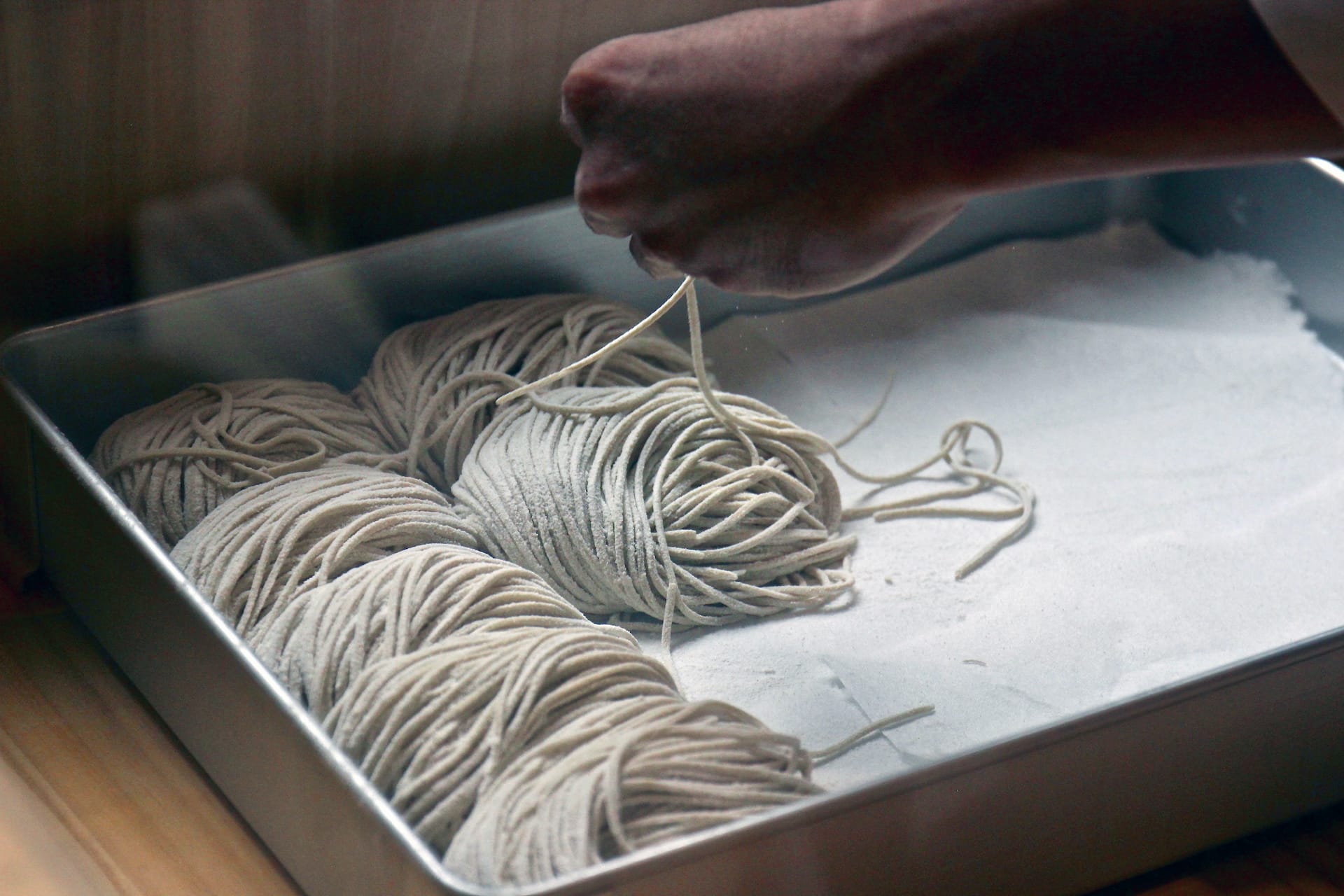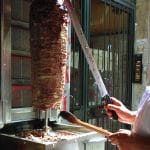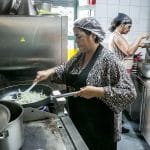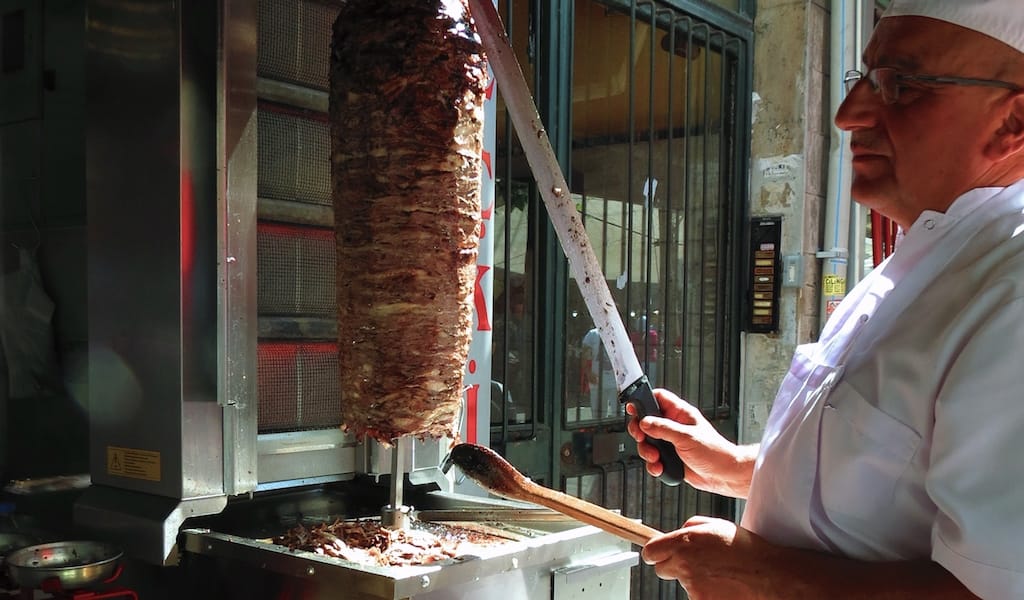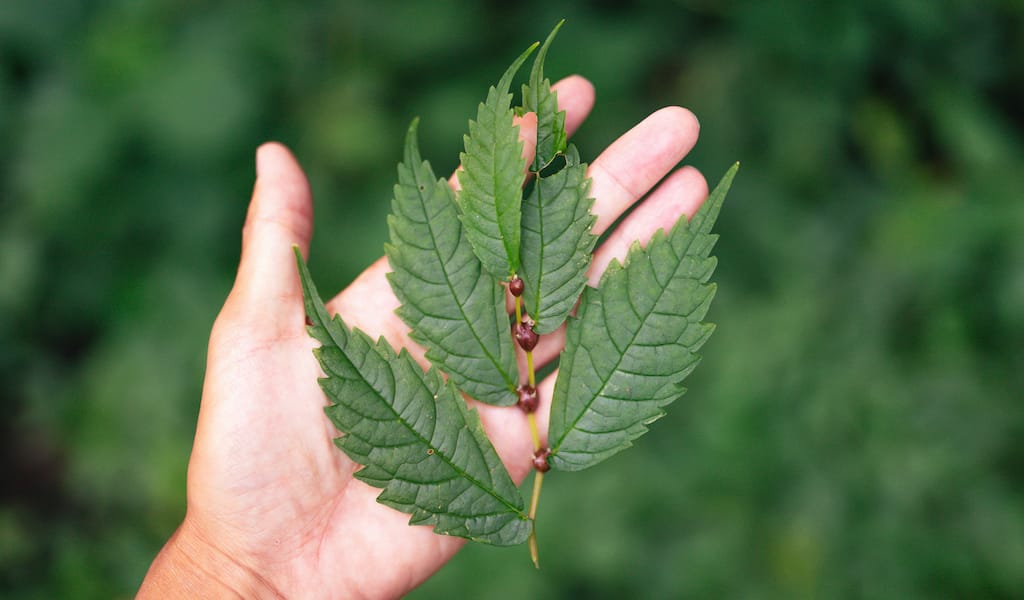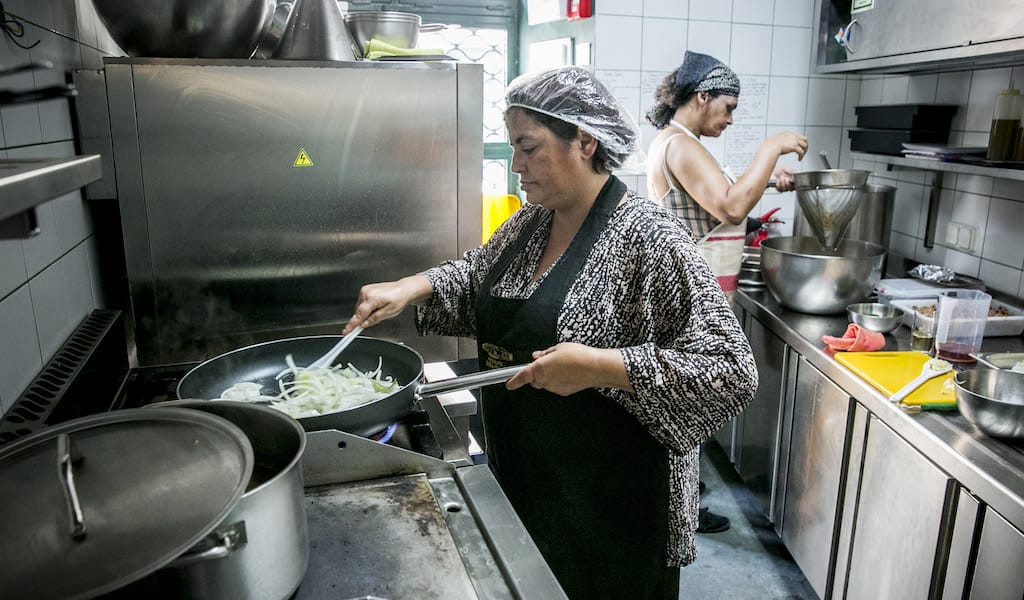In Japan, a bowl of noodles is more than just a tasty dish – it can speak to you of regional pride and culinary craft. It’s art, distinguished by the broth’s depth, noodle texture and the symphony of toppings. While Tokyo leans towards a subtler, often chicken-infused broth, head north to Sapporo and you’ll find bowls brimming with a miso-rich, hearty concoction, tailor-made for warding off the chill. In Hakata, the Fukuoka district gifts us with tonkotsu ramen, where pork bones are simmered down to a broth that’s as unapologetically porky as it is irresistible. In this city, every slurp is a testament to Japan’s noodle mastery, where wheat noodles become the perfect vessel for each region’s signature flavors. Wheat noodles, buckwheat noodles, green tea noodles, hot noodles, cold noodles – you can have them every which way and any time of the year. Below, we’ve shared our picks for where to find the best noodles in Tokyo, based on years of slurping.
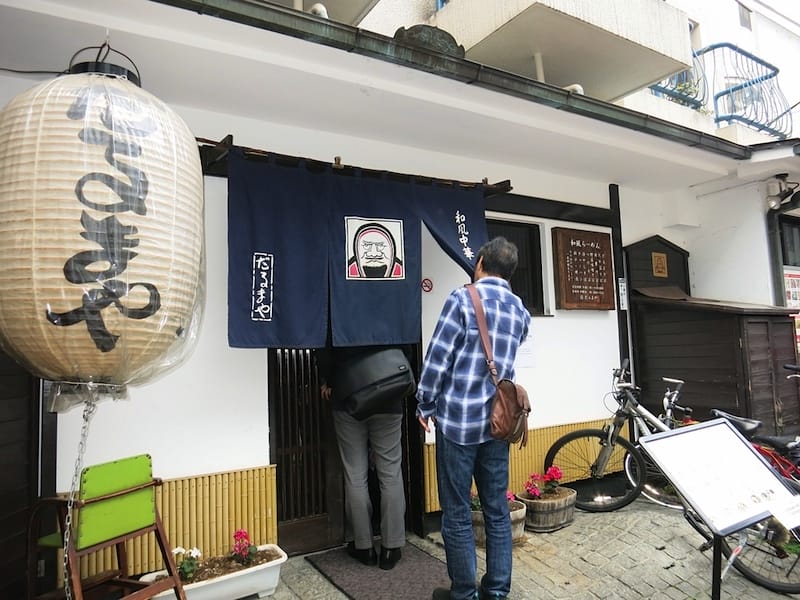
Daruma: The Old-School Spot
The world changed. These days, ramen noodles serve as a launching point for culinary daring around the world. And the area around Aoyama has become the center of everything kawaii and cool, which means that many small office buildings and wooden homes have been bulldozed and architectural wonders constructed to house brand-name boutiques and trendy pancake restaurants. Nestled in a small concrete building on a side street so narrow that one would think twice before driving a car down it, Daruma-ya hasn’t changed one bit.
Almost 45 years ago Daruma opened its doors near Aoyama University, feeding the hungry students who flocked there, along with many neighbors and workers from the nearby office buildings. The prices were reasonable and the ramen was top class. Everyone came for the original recipe: Japanese-style ramen, with fresh house-made noodles and a pungently addictive broth of pork, chicken legs and vegetables, spiked with shoyu (soy sauce). The menu’s undisputed ramen star: takana soba. Noodles can be fried, supersized or wonton-ed. Also available: an English picture menu and vegetarian options. It’s cash only, and you can expect a quick-moving line.
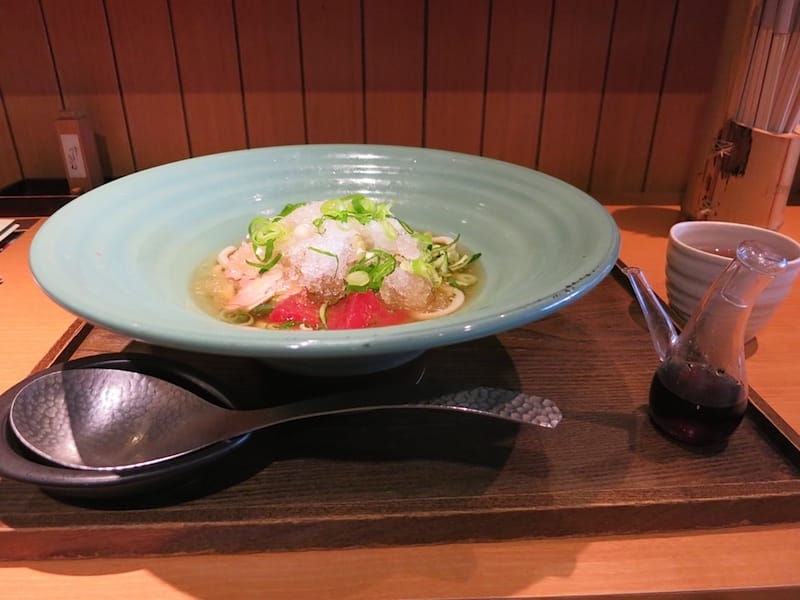
Tsurutontan Roppongi: Udon Overload
This past decade in Tokyo, ramen masters have been competing for cult status within a ramen culture imported from the United States. Soba chefs are newly coveted for their skill in grinding, rolling, cutting and plating and are praised as master craftsmen. Pity the chewy udon noodle, which has yet to find the same level of adoration. Comprised of wheat flour, salt and water, the humble udon noodle is served either hot or cold, thick or thin, and sold dry, pre-boiled or fresh. Smack in the middle of Roppongi and just a short walk from the station is Tsurutontan, one of Tokyo’s most beloved udon restaurants.
In summer we always succumb to the cold udon with sudachi (Japanese limes), which come straight from the island of Tokushima, sliced paper-thin over the noodles, with a mound of shaved ice riding on top and melting into a light sauce as it’s eaten. A house favorite is pork cutlet, freshly fried and savory, gleaming atop the noodles. Cooler weather beckons us toward a wider selection: shabu shabu udon, made with amazingly tasty beef, a flavorful dish with just-pink sliced duck simply splayed over the noodles; tempura-topped noodles with hot dipping sauce; or a crispy roasted rice cake riding atop the udon noodles, ready to be broken down into the broth. Also in easy supply are several sizes of draft beer and a good wine selection. We recommend going at off hours to avoid a long wait. The Tsurutontan franchise has made its way to New York. So fret not for humble udon; it’s about to get its moment in the sun.
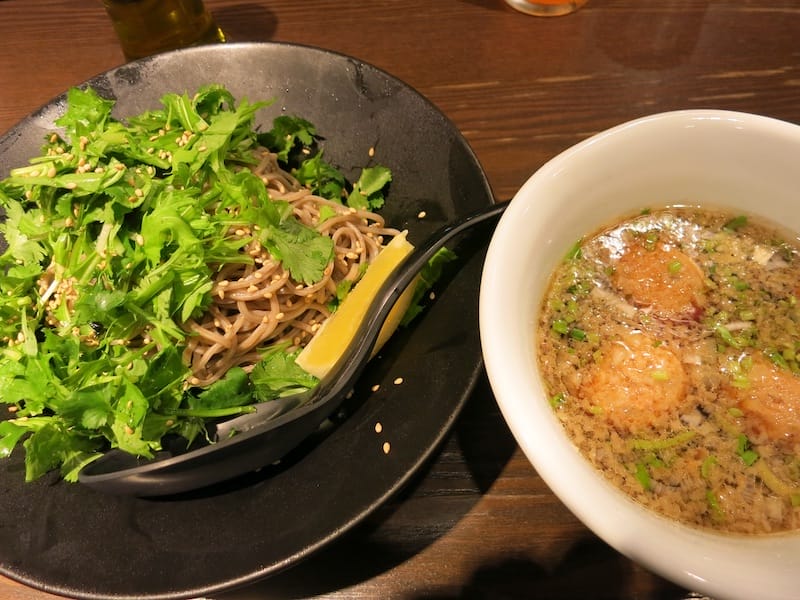
Soba Combo Watanabe: Super Soba
Tucked into a side room off Ippudo’s ramen section, the experiment that is Soba Combo Watanabe puts the Ippudo spin on soba noodles. Soba noodles contain varying combinations of wheat and buckwheat and are perhaps less appropriate for holding liquid flavors. To address that drawback, the Watanabe folks serve the soba noodles cold, to be dipped in a sauce on the side, as a cold tsuke (dipping) soba. The clever play here is that the dipping sauce is a hearty Ippudo ramen broth instead of the light dipping sauce usually served with soba.
Cooks behind the counter create each dish to order as cool jazz wafts over the room. The dipping sauce, made of Ippudo’s proprietary recipe of tonkotsu stock, shoyu and mirin, is heated and then blended while the soba noodles cook. Soba Combo Watanabe currently serves five varieties of soba: plain, with fresh coriander, simmered Japanese beef intestines, roasted pork with scallions or what they call “spicy meats” (spicy pork). Customers are encouraged to customize their noodles or broth with any of the ingredients used in the dishes as a “topping.” Extra soba is available for the super-hungry, as are simple rice bowls with an egg or greens. Soba Combo Watanabe is the kind of place you eagerly anticipate returning to again and again, if not to dawdle then to delight in a newfangled soba experience. The secret when you arrive is to tell the people at the door that you’re there for soba, and you can skip the ramen line!
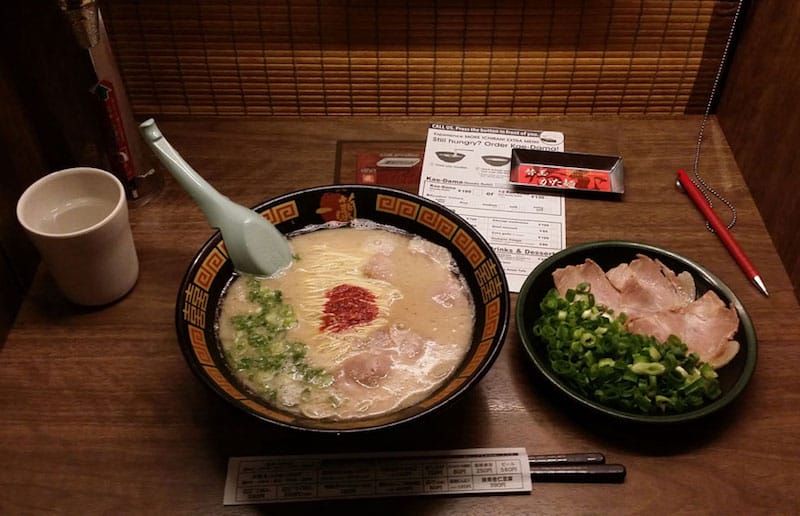
Ichiran: The Best for Solo Diners
The concept at Ichiran Ramen is complete personal space, so that customers can give their undivided attention to the Hakata-style ramen served there. The entrance to Shibuya Ichiran Ramen is down a long stairway, like at a speakeasy. The first thing you’ll encounter on your visit is the inevitable automatic pre-payment machine that greets visitors to many traditional ramen joints. The apparatus has order buttons for the basic but delicious tonkatsu ramen on offer and the many add-ons and drinks that are available. There are helpful pictures of each item as well as the price on each button. Collect your ticket, stealthily settle into a seat, then further customize your order on a slip of paper (Hakata-style ramen from Fukuoka Prefecture contains a milky white pork bone marrow broth with somewhat thin noodles and is often customizable). Hand it to a faceless staff member behind a counter with a bamboo screen. Within minutes, the bamboo curtain will rise, a steaming bowl of noodles behind it.
At the beginning of every meal in Japan, most people say itadakimasu, which translates as “I humbly receive this food,” an expression of gratitude. At the end of the meal, it is customary to say, gochisousama – “It was delicious” – in appreciation for the person who has prepared the meal or served it to you. With no check to pay, no person to thank and nobody to part ways with, silently glide up the stairs and back into the crowded streets of Tokyo.

Afuri: The Classic
Revisit the roots of classic ramen dining in Tokyo and pay a visit to the original Afuri ramen stand in Ebisu. Tucked into a back street in the warren that surrounds Ebisu station and facing the back exit of Ebisu yokocho (a trendy eating alley in Tokyo), this clean, well-lighted place has stood the test of time and continues to thrill. In 2000, it opened its doors to a hungry mob. Stepping inside and navigating past the waiting throng, we found the same reassuring meal ticket vending machine purring in the doorway. Veterans know which buttons to push and exactly how much they need to deposit in the coin and bill slots. Newcomers usually have a well-researched idea of which delight they will go for.
Afuri serves light, bright-tasting ramen with eye appeal and enticing flavors, with vegetarian, vegan and gluten-free options. Most-popular is the signature traditional yuzu ramen, scented with the fragrant citrus. The ultra-healthy chicken and dashi broth can be ordered salty or with shoyu. Balanced on top of the noodles are an exquisite raft of cha shu pork, half a soft-boiled egg, mizuna, menma (bamboo shoots) and a wisp of nori (seaweed). While you wait, watch the chef lightly grill the cha shu over charcoals in the back of the kitchen. Be sure to save room for a specially brewed draft beer from Asahi breweries.
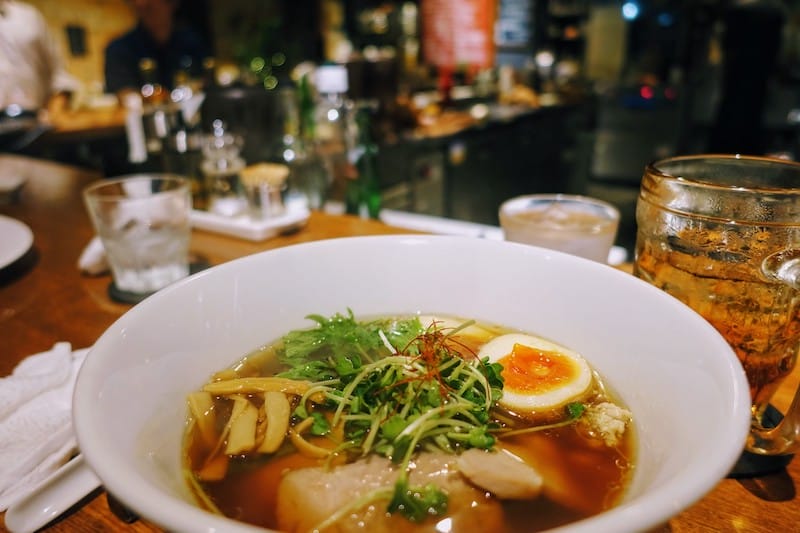
Kemuri Ramen: The Most Inventive
Unusual takes on ramen abound in Tokyo, from carefully balanced chocolate and lamb creations for Valentine’s Day to algae-tinted blue broth, but few leave you with cravings and daydreams lasting for weeks. Adding a quality twist on ramen is a challenge – simplicity is one of the dish’s most vital elements, as with most Japanese cuisine.
Yet friends Yamada and Sumida struck gold with one perfectly measured twist: smoke. Tucked away near Rikkyo University in a quiet area filled with student-friendly restaurants and cafés, their modest ramen joint Kemuri (which means “smoke” in Japanese) serves their latest experimental dishes without straying from the joy of good ramen at its best – quality ingredients cooked to perfection. With jars of soy sauce bubbling in the background and a smoky chest filled with promises, the theme is clear, but manages not to be overwhelming.
Offering only counter seats with a small standing section, the intimate setting makes newcomers feel like locals, with many spending entire evenings working their way through the temptations of the ever-changing menu. Alongside a variety of spirits and simple cocktails, they serve the initially unexpected option of Guinness; but one sip of the dark, wheat flavor and you realize it’s the perfect partner to their smoky bowls of ramen. Through trial and error, they perfected their core ingredients – soy sauce that has been smoked for around six days to reach the perfect depth of flavor, as well as eggs and mushrooms that have been given their chance in the smoking chamber, too. Whether you come hungry enough for the ramen or prefer a few tapas-style bar dishes, the variety will ensure you return for whatever you couldn’t manage. Having arrived late in the evening and ravenous, we opt for both – a few smaller dishes followed by the smoky shoyu (Japanese-style soy sauce) ramen. Delicious.

Chabuzen: The Vegan Option
Daiji Takada, owner of Chabuzen, peeks out over the counter from the kitchen, which has about a meter-long strip of standing space for one at most. The interior of this narrow restaurant, tucked away in the very fringes of the hip neighborhood of Shimokitazawa in western Tokyo, isn’t much more spacious. Two low tables on tatami provide enough room for around six to squeeze in, and there are a couple of stools at the counter – although occupying those spaces would almost certainly prevent anyone from getting out the door.
Nestled in a residential area that makes the 10-minute walk from the nearest station seem unreasonably long, the random, almost defiant nature of Chabuzen’s location bears the classic mark of someone doing exactly what they want, exactly how they want to do it. In 2008, Daiji Takada opened Chabuzen, focused on organic, healthy products, and transformed it into a vegan spot in 2014. While a small and relatively obscure restaurant in Tokyo’s sprawling mass, those in the know rave about its dragon ramen – a creamy mock tonkotsu that even has people from Fukuoka, the dish’s alleged birthplace, confused as to how it manages to taste so rich without using pork.
Tokyo may have 160,000 dining establishments, but the vast majority offer no vegetarian options, let alone vegan. What started as a personal mission to heal people through diet now draws in vegans with ethical and environmental concerns, as well as Muslims in Tokyo. The restaurant is Halal-certified and the menu is in English, Chinese and Korean. The full name of the restaurant in English is “Food Therapy Diner Chabuzen”, but with such addictive delights and hefty portion sizes, it’s easy to leave feeling almost uncomfortably full. Through care and creativity, Takada has created satisfying vegan versions of Japanese soul food. The only concern is whether the restaurant’s growing number of visitors can actually fit inside.

Menya Imamura: The Best Chicken Ramen
In 2015, a ramen store in Tokyo made waves by becoming the first ever to receive a Michelin star. Tucked down a street in a slightly shabby area near Sugamo Station to Tokyo’s north, the store, Tsuta, was flooded with hordes of noodle worshippers and subsequently issued a timed-entry ticketing system to manage the crowds (reportedly to spare the clientele of the love hotel across the street from embarrassment). Locals maintain, however, that the best ramen in the area is not found at Tsuta, which has since moved to a more upmarket location, but rather at Menya Imamura, housed one street over from the original Tsuta store.
Defying the eye-catching design of many ramen stores that are often decked with gawdy red-and-yellow signs, Menya Imamura emulates a plainer, more traditional design. Wooden slatted windows obscure the interior and white noren (flags) hang across the door. The limited menu illustrates a confidence in the idea that simplicity delivers satisfaction. There is a choice of only two types of ramen, both made with a base broth of chicken and small dried sardines. The shoyu version comes in a white bowl and has a strong sardine flavor, the broth thicker, with punchy umami recalling memories of the sea; the other, shio (salt), served in a red bowl, is closer to a hearty chicken soup that warms the body on a chilly day.
Each bowl is laden with thick, springy noodles that capture plenty of broth. These are crowned by three slices of pillow-soft chicken char siu, first cooked sous vide at 60 degrees C for two hours and then finished before customers’ eyes on a charcoal grill, a nod to the store’s history as a yakitori (grilled chicken) joint. The meat is accompanied by spring onions, and more unusually, slices of white onion and a lightly pickled tomato, adding sour-sweet notes that give extra depth to the already richly flavored soup. Owner Mamoru Imamura first began working in a ramen shop at the age of 18 and gathered the tricks of the trades for 25 years before opening Menya Imamura. Here, every bowl arrives on a tray and is presented like a work of art. The additional topping of a soy-flavored boiled egg (highly recommended) is stamped with the name of the store, the yolk inside cooked to custardy perfection. Their dedication to the ramen craft is clear.

Udon Shin: Shinjuku’s Finest
Anticipating a line, we arrived ahead of our appetite, but the slightly acrid smell of fresh dashi wafting over the street hurried our hunger. Tucked behind a handful of confounding corners southwest of Shinjuku Station in a mixed-use neighborhood of apartments, shops and offices, Udon Shin has consistently ranked among the best udon restaurants in Tokyo since opening in April 2011.
Owner and chef Shinji Narahara deftly handles the classic accompaniment to udon (think homemade dashi, deep-fried tofu and tempura) but elevates the humble noodle to modern heights with their trademark carbonara udon.
Udon Shin makes its noodles to order, by hand, to guarantee freshness. Closer to the door we could see through the window and watch the chefs at work rolling out dough and cutting the noodles with an old, squeaky machine covered in a fine layer of flour. Although we placed our order while we waited in line, the kitchen didn’t start rolling out the dough for our noodles until we were seated. In the meantime, we inspected the restaurant’s cramped interior, which barely seats 10. Ten minutes later our order hit the table. First timers are encouraged to enjoy their noodles cold to fully appreciate the freshness and texture, but we like our udon hot.
Despite our hunger, we couldn’t help but take a moment to goggle at the sumptuous serving before us. A twist of thick, white noodles cradled a raw, yellow egg yolk. A slab of tempura-fried back bacon leaned against the side of the bowl. The egg was slightly cooked, and tendrils of steam carried up the scent of melting parmesan cheese and black pepper, as we stirred the hot noodles with our chopsticks. The flavors melded perfectly, the tempura bacon toasty and deeply satisfying. Narahara’s innovation is a particular cut and lighter-than-average flouring, resulting in noodles that are exceptionally flavorful and chewy, belying their simple seeming nature.
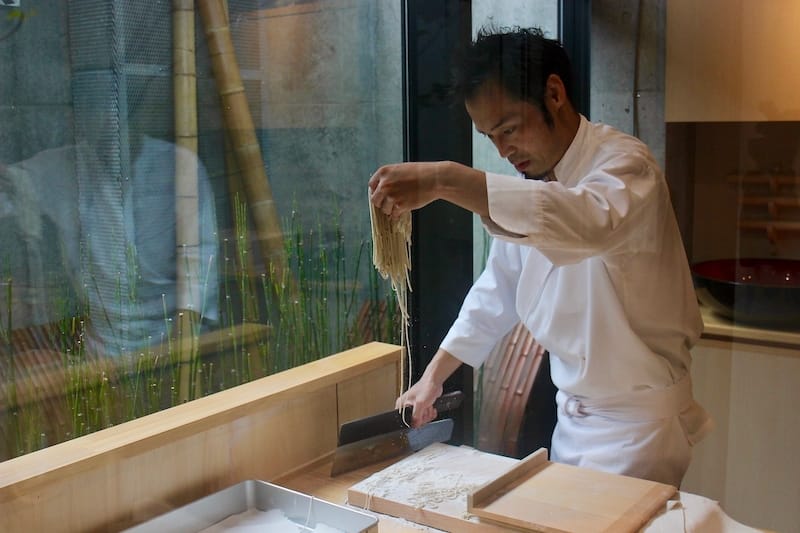
Soba Kaiseki Gi: The International Influence
Ramen may have seen a worldwide boom in recent years, but when it comes to soba – Japanese buckwheat noodles – fans might say they’ve been unfairly neglected. “Soba have a history of at least 400 years, as long as sushi. Yet they’re almost completely unknown abroad,” chef Yoshinobu Saito says. “I want to promote soba worldwide.” Soba Kaiseki Gi, located in the stylish area of Ebisu, has a sleek pale-wooden counter and backlit bottles of sake, a modern yet unmistakably Japanese restaurant, which does exactly as its name suggests: soba for lunch, and kaiseki, a traditional multi-course dinner, with – in this case – buckwheat playing a starring role.
Yet the menu hints of overseas influences. A seasonal special, Italian truffle soba looks every bit as luxurious as it sounds. Handcrafted noodles are neatly folded in on themselves, glistening in a lightly creamy sauce, topped with an onsen tamago (an egg cooked slowly inside its shell in hot water), finished with elegant shavings of truffle. The ingredients perhaps whisper to memories of Italian summers, but the earthiness of the soba noodles tie the dish firmly to its roots in Japan.
Every morning, Saito rolls out 20 portions of soba by hand at a large stone basin behind glass and set up like a stage at the front of the store. (The 20 portions are for the lunch service; he makes more soba before dinner.) Although tucked down on a basement floor, his deft movements sometimes catch the eye of passers-by, who peer down at the performance. Fascinated by the different palates of different regions, Saito dreams of sending soba abroad – perhaps to France – to see people enjoy it as eagerly as ramen, even if it evolves in its new surroundings. In the meantime, at Gi, each season presents a new creative challenge, and a chance to mix Japanese flavors with tastes that tug at memories of far away places.

Sarashina Horii Azabujūban Honten: The Longest-Running
Reach far back into Japan’s gastronomic past at Azabu Juban’s Sarashina Horii Soba – “living history” in the form of a pleasantly simple meal. The Sarashina cooking lineage stretches back over 200 years and is always evident in the shimmering, high-quality plates of buckwheat noodles coming from the kitchen. The signature dish here is kakiage soba, a tempura fritter of mizuna studded with sakura ebi (small shrimp) that is accompanied either by a bowl of hot tanemono soba noodles in a fragrant soy-based dashi broth or cold seiro soba noodles for dipping in a special cold sauce.
As the weather turns warmer, cold seiro soba becomes the norm. Sarashina serves four slightly different kinds of cold noodles. The mori-soba is a simple hand-cut brown buckwheat noodle made from varied percentages of buckwheat and regular wheat. Using only the core of the buckwheat creates the white-colored Sarashina soba. The futouchi-soba is made from 100 percent soba flour, making it thicker and stiff. Since all of Sarashina Horii’s soba is hand cut, the futouchi tend to be almost like linguine in shape. Lastly, the kawari-soba is a lighter soba flavored with seasonal herbs such as sansho pepper or a citrus such as yuzu. All are served with a tsuyu dipping sauce – either traditional soy-based sauce, or a sweeter sauce if desired. Next to the sauce is a small dish containing wasabi and thinly sliced negi scallions to use as desired for flavoring the tsuyu. One of the standout cold sobas comes with a small bowl of duck broth laced with sparkling slices of fatty duck sitting off to the side. But really, you can’t go wrong with any of them.
Published on June 07, 2024
Related stories
October 19, 2018
Istanbul | By Lorenza Mussini
IstanbulWalking around the busy Çarşamba Market in Fatih on a Wednesday, we spot a line of people waiting patiently in front of a butcher shop. Not wholly unsurprising, since it is a market day, but we notice that some of them are enjoying particularly tasty-looking döner sandwiches. The tempting smell coming from the little shop,…
September 14, 2022
Tokyo | By Florentyna Leow
TokyoMuch has been written about the yamabushi of the Dewa Sanzan mountains in Yamagata Prefecture, about two and a half hours north of Tokyo via bullet train. The yamabushi are followers of Shugendo, an ascetic mountain religion best thought of as an amalgamation of Shinto, Buddhism, Taoism, and mountain worship. Shrouded in secrecy and more…
May 31, 2022
LisbonWhen Crescer, a non-profit association focused on the social integration of Lisbon’s vulnerable populations, was tasked by City Hall to create a restaurant that would serve the homeless three years ago, the association’s top brass had another idea. “If you give a man a fish, he eats for a day. If you teach a man to fish, he eats…







































